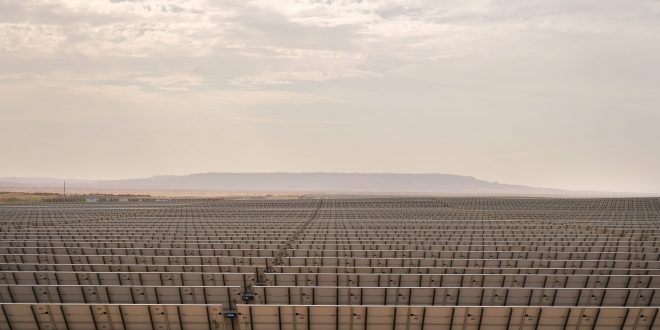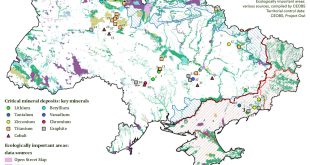Egypt and Saudi Arabia advance a significant power grid interconnection, enhancing regional energy exchange and cooperation.
Saudi Arabia and Egypt, two of the most powerful countries in the Arab world, have long enjoyed strong diplomatic, economic, and strategic relations. The two nations’ cooperation on regional security issues has further cemented their strong bilateral relationship. In recent years, energy has become a crucial component of this relationship, as both nations recognize the importance of energy security for their continued economic growth and stability. Given Egypt’s status as a major energy consumer and controls the Suez canal where 9% of the global oil trade passes, and Saudi Arabia’s position as one of the world’s leading oil producers, collaborative projects like the Egypt-Saudi Arabia electrical interconnection project hold significant potential for strengthening commercial relations.
In recent years, Egypt has faced substantial electricity supply challenges, exacerbated by heat waves and gas shortages, which have led to persistent rolling blackouts across the country since July 2022. The strain on the electrical system has grown due to increased demand, particularly from widespread use of air conditioning in Egyptian cities. In spite of this challenge, Egypt is steadfast in its ambitious goal of generating 42 percent of its electricity from renewable sources by 2035. Cairo has not yet met this target. The state has invested heavily in hydropower along Egypt’s coast, and in by the end of 2022 hydropower accounted for 2,832 MW of Egypt’s 6,322 MW of renewable energy capacity, or around 45 percent. However, renewables still only account for a small portion of the overall electricity mix. Although Egypt’s potential for renewable energy is increasing—and it has developed extensive solar and wind programs in addition to hydropower—it has not yet attained the 42 percent goal, and does not appear likely to in the near future.
Making Connections
To address these energy issues, Egypt is proactively seeking to establish power connections with African countries with abundant hydroelectric resources. Cairo aims to increase its electricity connections with neighboring states, planning to boost its exchange capacity from 450 MW to 1,100 MW with Jordan and from 150 MW to 2,000 MW with Libya. By leveraging its strategic location at the crossroads of Asia, Africa, and the Gulf, Egypt aims to fulfill a broader strategy of addressing its significant energy challenges while strengthening its commercial ties to the region.
While Egypt aspires to eventually export excess electricity and promote regional energy integration—most notably through a substantial interconnection project with Saudi Arabia—the country is currently grappling with severe energy issues that undermine these goals. Ironically, Egypt has significant offshore natural gas reserves and could theoretically redirect these to maintain a stable power supply, but the administration of President Abdel Fattah El-Sisi has instead sought to export the gas in order to gain precious foreign currency for other government spending. To address the crisis, the government has implemented a nationwide “energy consumption rationing plan” to conserve natural gas—and ‘load-shedding’ through regularly scheduled blackouts. Consequently, many Egyptians experience daily power cuts of up to four hours or more, disrupting daily routines, impacting businesses, hospitals, and households nationwide.
The Egypt-Saudi Arabia electrical interconnection project is a landmark initiative aimed at enhancing bilateral energy cooperation by linking the electrical grids of the two countries. Expected to cost $1.8 billion, this project represents a transformation of the region’s energy future. Once completed, it will enable the exchange of up to 3,000 MW of electricity between Saudi Arabia and Egypt—enough to power nearly 2 million homes. The main objective of the interconnection project is to establish a cooperative energy exchange system that takes advantage of the different peak electricity demands in each country, thereby lowering fuel consumption and increasing the stability of the Saudi and Egyptian electrical grids. The project’s significance lies partially in its status as the first large-scale ‘high-voltage direct current’ (HVDC) link, which suffers less power loss than more popular alternating current (AC) systems in the region.
The project cements Egypt’s strategic position as a hub for energy that links the Gulf, Europe, and Africa. The interconnection project is also poised to provide a model for future Arab energy integration by facilitating a reliable and efficient energy exchange between two major countries in the region. The project’s success could open opportunities for further connections with neighboring countries, fostering a robust and integrated regional energy market that supports energy security and accelerates economic growth.
Barriers to Success
Despite its promise, the project faces several significant challenges. One of the primary obstacles is the lengthy ‘interconnection queue’ process, which can substantially delay projects from submission to commercial operation. In Europe, wait times can extend from eight to 15 years due to backlogs caused by an influx of renewable energy projects needing inspection and regulatory approval.
Indeed, the claim that wait times in Europe are 8–15 years is deceptive, and the search results do not provide strong evidence for it. Although there are notable delays, they are typically not as severe throughout Europe. According to WindEurope, some projects may have to wait up to nine years for licenses. Wait times for grid connections have been reported to be 10–15 years in certain places, such as the UK2. Instead than making generalizations about the entire continent, a more truthful statement would highlight the notable but diverse delays around Europe, pointing out that there are extreme occurrences in some nations.
Additionally, the rising costs associated with interconnection—the process of connecting new power sources to an existing energy grid—threaten the financial sustainability of the Egypt-Saudi Arabia project. The primary cause of the increasing interconnection costs is the need for network upgrades, such as new substations and long-distance transmission lines, to link distant renewable installations to urban areas. Due to the difficulties of integrating multiple new projects into existing infrastructure and the increased demand for grid connections, these transmission costs have in some cases doubled. Large-scale connectivity projects like the Egypt-Saudi Arabia plan are seriously threatened financially by these rising costs and delays.
The increased costs for network upgrades, compared to the relatively stable cost of natural gas plants, complicate matters further. Limitations in grid capacity could also render the project inefficient. Many proposed projects are in areas where transmission lines are nearing capacity, necessitating costly and time-consuming system upgrades before additional projects can be connected. Regulatory complexities, including the need for extensive studies and a lack of transparency, further exacerbate these challenges. Land-use and siting issues, such as local opposition and the identification of suitable sites, also pose significant barriers. Balancing national policies with local interests can be difficult, requiring flexible agreements that adapt to changing circumstances.
Egypt has demonstrated a significant commitment to both domestic energy security and international environmental goals through its expansion of its interconnection capacity and renewable energy initiatives. Simplifying regulatory procedures to reduce interconnection delays, creating new funding plans to offset growing infrastructure costs, and encouraging long-term political cooperation to bring participating nations’ energy policies into alignment are all necessary to realize the full potential of the Saudi-Egyptian project. Ultimately, the success of this project could contribute to economic growth as the MENA region struggles with energy security and the need for a clean energy transition. It could also serve as a model for similar initiatives around the world and hasten the transition to a more sustainable and interconnected global energy system. By approving the $1.8 billion electrical link project, Egypt appears to understand the seriousness of its escalating electricity supply issues, and show a commitment to addressing it.
The Saudi-Egyptian HVDC interconnection project is a landmark development in the energy landscape of the MENA region and establishes a standard for future cross-border energy cooperation. It promises enhanced regional collaboration, better integration of renewable energy, and higher energy efficiency. To succeed, the project must overcome several obstacles, such as growing transmission prices, the requirement for a large financial outlay, and the difficulties in coordinating several national grids. Egypt should streamline regulatory procedures to cut down on interconnection delays and promote sustained political collaboration among participating countries in order to optimize the project’s potential.





